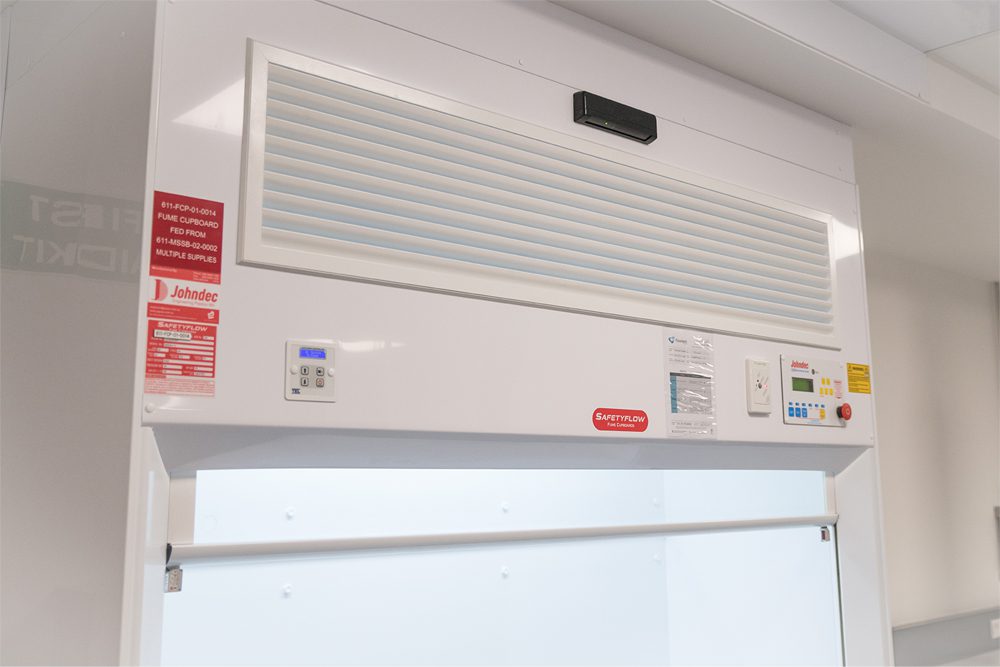Fumes are released into the air when synthetic chemicals like paints, solvents, and other petroleum-based products burn or react within an environment.
This guide will help you understand fume extraction systems as well as some important considerations when selecting one. These include what type of engine it needs in order ensure proper safety precautions throughout your facility, while also making sure that all ventilation gaps meet minimum size standards.
If you have any questions about fume ventilation and extraction or how we can help you, contact us today.
LOCAL EXHAUST VENTILATION
Local exhaust systems remove toxic pollutants before they can mix with a worker’s breathing zone.
Examples of local exhaust ventilation include:
DOWNDRAFT TABLE
Downdraft tables are a simple and effective source-capture fume extraction system. Fumes are drawn down through the grid into exhaust ducting, preventing them from rising up and mixing in with your breathable atmosphere. These systems can be used for smaller spaces too; just make sure you have enough space on-site before investing in one of these systems.
PORTABLE HIGH VACUUM (PHV)
Portable High Vacuum (PHV) systems can be used in small weld, fabrication shops or maintenance facilities where space may not always permit the use of larger equipment. This is helpful when removing contaminated air from difficult to reach locations on ship hulls – providing efficient solutions.
MOBILE FUME EXTRACTORS
Mobile fume extraction units can come in light, medium or heavy-duty varieties. They’re typically wheeled around facilities to sources of pollution without a fixed location and must be able operate with disposable filters that don’t last very long before they need replacing. This is why it’s essential for them to have good filtration and activated carbon absorption systems, so you capture as many pollutants as possible within their capabilities.
STATIONARY FUME EXTRACTORS
Stationary systems save on valuable floor space by being attached to the walls of a facility. Stationary fume extraction units can come in light or heavy-duty variants. Heavy duty mobile systems are available with disposable filters or self-cleaning filters.
TYPES OF FUME EXTRACTION VENTILATION SYSTEMS
DILUTER SYSTEMS
The diluter system is a stand-alone, free-standing solution to reduce and control the background concentration of welding fumes in your workshop or facility.
EXTRACTION HOODS
In some cases, isolating a welding or cutting workspace is preferred. Extraction hoods are modular extraction hoods and ideal for these scenarios. Extraction hoods are especially preferred and suitable for robotic welding applications.
MULTIPLE ARM SYSTEMS
Source extraction can be an excellent option for facilities with a row of welding booths. A multiple arm system allows for individual positioning where needed and reduces energy consumption by automatically controlling the speed at which they work – making it easier than ever before! One important thing to keep in mind when investing your money into these systems though: make sure you follow all local regulations.
FUME EXTRACTION SYSTEM CONSIDERATIONS
An excellent starting point is understanding your facility and needs.
- How big is the workshop or facility?
- How much welding is done?
- How many welders are there?
- Is there a robotic welder?
- Does metalwork occur in specific, pre-defined locations?
- How much floor and wall space are there?

